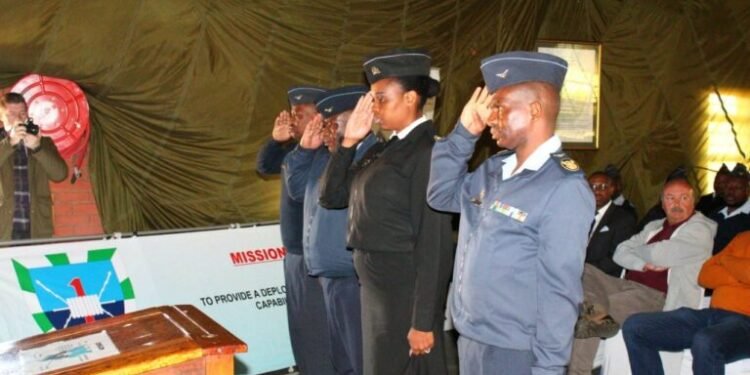
It’s taken 22 years for an upgrade of the SA National Defence Force’s (SANDF’s) combat net radio (CNR) systems, with SA Army brigade, division and formation commanding officers hearing upgraded radio communications have been tested by South African force elements in Democratic Republic of Congo (DRC).
The taking into service of improved and technologically updated combat net radios – as per Project Radiate – was imparted during a project outcome briefing with a view to force-wide implementation and utilisation in KwaZulu-Natal’s New Germany, where contractor Reutech Communications is headquartered.
The project started in 2002 with Reutech Communications and the SANDF Command and Management Information Systems (CMIS) Division jointly at the helm.
Christened a “work session” by Captain Lehutso Phahlamohlaka and starting on 7 May, the gathering concentrated on transitioning and implementing project outcomes as well as deployment and integration strategies. The five-day KwaZulu-Natal session followed baseline manufacturing targets being met, developmental operational testing and evaluation (OTE) successfully concluded, along with final OTE and ongoing training for operators and maintenance personnel.
Reporting on the briefing, Phahlamohlaka wrote it was a success paving the way for roll-out with the extra of active service evaluation by South African soldiers deployed to the United Nations (UN) mission in the DRC. Apart from being one of three troop contributing countries (TCCs) to the MONUSCO Force intervention Brigade (FIB), the SANDF contribution to the UN force consists of a quick reaction force (QRF), a tactical intelligence unit – all drawn from SA Army formations – and SA Air Force (SAAF) and SA Military Health Service (SAMHS) elements.
The first CNR units to be sent to the DRC formed part of extensive OTE with reports from the central African country indicating the radios performed well under “wet and nasty conditions”.
The new tactical radios allow for inter-service and division operability as specified in project documentation. The CNRs operate in HF, VHF and UHF frequencies with secure voice and data network links for ground to air, ground-based and naval applications. The new radios are reverse compatible with older still in service units.
Reutech’s landward radios are Link-ZA compatible and feature encryption, frequency hopping and fitted GPS receivers for situational awareness. The radios Reutech is supplying to the SANDF under Project Radiate were designed as a family from the outset for ease of use across all systems for logistics and human-machine interface functionality. Around 4 000 vehicle radios were ordered, with similar numbers of man portable radios.










